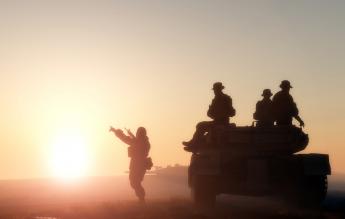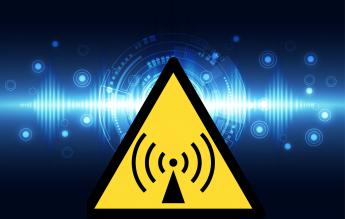
The United Nations Economic Commission for Europe (UNECE) is one of the five regional commissions of the United Nations Economic and Social Council (ECOSOC). It is composed of 56 member states: European countries, plus  the United States, Canada, Israel, Turkey, and the former Soviet republics of the Caucasus and Central Asia.
the United States, Canada, Israel, Turkey, and the former Soviet republics of the Caucasus and Central Asia.
The objective of this commission is to converge the approval procedures between the member states.
Three UN agreements, adopted in 1958, 1997 and 1998, provide the legal framework for the WP.29 to establish regulatory instruments concerning motor vehicles and their equipment.
WP.29 has created six permanent working groups GR in charge of examining specialized tasks and composed of people with specific expertise with the GRSP for passive safety (which evolves the GTR N°20) or the GRPE for pollution and energy (which pilots the GTR N°15). The evolution of the EMC regulation is followed in the EMC Task Force (TF EMC) of the GRGRE.
The ECE R.10 Rev.6 / UNR10 regulation (Uniform provisions concerning the approval of vehicles with regard to electromagnetic compatibility) is followed by the EMC Task Force (TF EMC) of the GRGRE.
This regulation applies to motor vehicles with less than 4 wheels (but also 2-wheeled vehicles, 3-wheeled vehicles), cars, trucks, coaches, ... but also to vehicles as defined by categories L, M, N, O, T, R and S of the document ECE/TRANS/WP.29/78/Rev.6 and to their electrical and electronic sub-assemblies (including batteries and motors of electric vehicles)
The taking into account of revision 6 of ECE R10 is recorded by the Council Decision (EU) 2019/399 of 7 March 2019.
The Emitech Group takes care of all these tests. The diversity of our equipment allows us to use the test means with the most suitable specifications for the characteristics of the cells and batteries entrusted to us.
We thus propose you costs corresponding to the means engaged and in the respect of your constraints of deadlines.
All vehicles of categories L, M, N, O, T, R and S are concerned by this procedure.
Note that in the case of electric vehicle, the approval must be requested for the REESS and for the connection circuit for the recharge of this REESS.
Find detailed information on our vehicle test center and our approval tests in a very large Faraday cage (27 x 18 x 10.5m)
Not all ESAs are subject to E marking
For ESAs, the tests are to be carried out in an ISO 17025 accredited laboratory.
Paragraph 6 sets out the requirements in configurations other than "recharge mode of the REESS, on the electrical grid".
Paragraph 7 sets out the additional requirements in the "recharge mode" configuration of the REESS on the electrical grid".
The requirements for radiated emissions, radiated immunities, conducted emissions and immunity to conducted disturbances are defined, as well as those for electrostatic discharges.
The test shall be performed according to CISPR 12 in the frequency range 30 to 1000 MHz.
Annex 4 specifies the test method to be used.
Where applicable, vehicles shall be tested in two configurations:
The test shall be performed according to CISPR 12 or CISPR 25 in the frequency range 30 to 1 000 MHz.
Annex 5 specifies the test method to be followed.
The test applies only to vehicles in a configuration other than "REESS charging mode coupled to the power grid.
Depending on the type of test, it is carried out in accordance with standard ISO 11451-2 (in accordance with the details given in Annex 6, particularly with regard to the vehicle test conditions for the "50 km/h" mode) or with standard ISO 11451-1
The field strength shall be 30 V/m rms over 90 % of the 20 to 2 000 MHz frequency band and at least 25 V/m rms over the whole 20 to 2 000 MHz frequency band.
Where applicable, vehicles are tested in two configurations:
Vehicles that do not have ESAs with "immunity related functions" are not tested for radiated immunity.
The harmonic emissions on the AC power lines produced by a vehicle representative of its type shall be measured according to the procedure described in Annex 11.
The test shall be performed in accordance with:
Disturbances in the form of voltage variations, voltage fluctuations and flicker emitted on the AC network by a vehicle representative of its type shall be measured according to the procedure described in Annex 12.
The test shall be performed in accordance with:
Conducted RF emissions on AC or DC power lines from a vehicle representative of its type shall be measured according to the procedure described in Annex 13.
Unless otherwise specified in the Annex, the test shall be performed in accordance with CISPR 16-2-1.
Conducted RF emissions from the vehicle at the wired network socket shall be measured on a vehicle representative of its type using the procedure described in Annex 14.
Unless otherwise specified in the Annex, the test shall be performed in accordance with CISPR 22.
L’immunité aux transitoires électriques rapides/en salve sur les lignes d’alimentation en alternatif ou continu d’un véhicule représentatif de son type est mesurée selon la procédure décrite à l’annexe 15.
The immunity to transient/burst disturbances conducted along AC or DC power lines of a vehicle representative of its type shall be measured according to the procedure described in Annex 15.
Unless otherwise specified in the Annex, the test shall be performed in accordance with IEC 61000-4-4.
The immunity to surge conducted along AC and DC power lines of a vehicle representative of its type shall be measured according to the procedure described in Annex 16.
Unless otherwise specified in the Annex, the test shall be carried out in accordance with IEC 61000-4-5.
The test shall be performed in accordance with CISPR 12 in the frequency range 30 to 1000 MHz.
Annex 7 specifies the test method to be used.
Where applicable, vehicles shall be tested in two configurations:
The test shall be performed in accordance with CISPR 25 in the frequency range of 30 to 1000 MHz.
Instead of an anechoic shielded enclosure, a free-field test site complying with CISPR 16-1-4 may be used.
Appendix 8 specifies the test method to be used.
The test is only applicable in a configuration other than "REESS charging mode coupled to the power grid".
The emission test shall be performed in accordance with ISO 7637-2.
Annex 10 specifies the test method to be followed.
The test is only applicable in a configuration other than "REESS charging mode coupled to the power grid".
ESAs that are not switched, do not contain switches, or do not include an inductive load, are not subject to the conducted transient emission test and are declared compliant
Depending on the type of test, it is carried out in accordance with standard ISO 11451-2 (in accordance with the details given in Annex 6, particularly with regard to the vehicle test conditions for the "50 km/h" mode) or with standard ISO 11451-1
Depending on the test method adopted, the field strength is between 12.5 V/m and 75 V/m rms in the 20 to 2000 MHz frequency band.
Annex 9 describes the test methods that can be used based on ISO 11452-1, ISO 11452-2, ISO 11452-3, ISO 11452-4 and ISO 11452-5
The test method covers both types of ESAs:
ESAs with no "immunity related functions" are not subject to radiated immunity testing
The immunity test of the ESA representative of its type shall be carried out according to the procedure(s) according to ISO 7637-2, which are described in Annex 10.
The harmonic emissions on the AC power lines produced by a vehicle representative of its type shall be measured according to the procedure described in Annex 17.
The test shall be performed in accordance with:
Disturbances in the form of voltage variations, voltage fluctuations and flicker emitted on the alternating network by a vehicle representative of its type shall be measured according to the procedure described in Annex 18.
The test shall be performed in accordance with:
Conducted RF interference emitted on AC or DC power lines by a vehicle representative of its type shall be measured according to the procedure described in Annex 19.
Unless otherwise specified in the Annex, the test shall be performed in accordance with CISPR 16-2-1.
The conducted RF interference emitted by the vehicle at the cable network socket shall be measured on a vehicle representative of its type according to the procedure described in Annex 20.
Unless otherwise specified in the Annex, the test shall be performed in accordance with CISPR 22.
Immunity to fast/burst electrical transients on the AC or DC supply lines of a vehicle representative of its type shall be measured according to the procedure described in Annex 21.
Unless otherwise specified in the Annex, the test shall be performed in accordance with IEC 61000-4-4.
The immunity to overvoltages conducted on the AC or DC supply lines of a vehicle representative of its type shall be measured according to the procedure described in Annex 22.
Unless otherwise specified in the Annex, the test shall be carried out in accordance with IEC 61000-4-5.













Emitech Group - Legal information